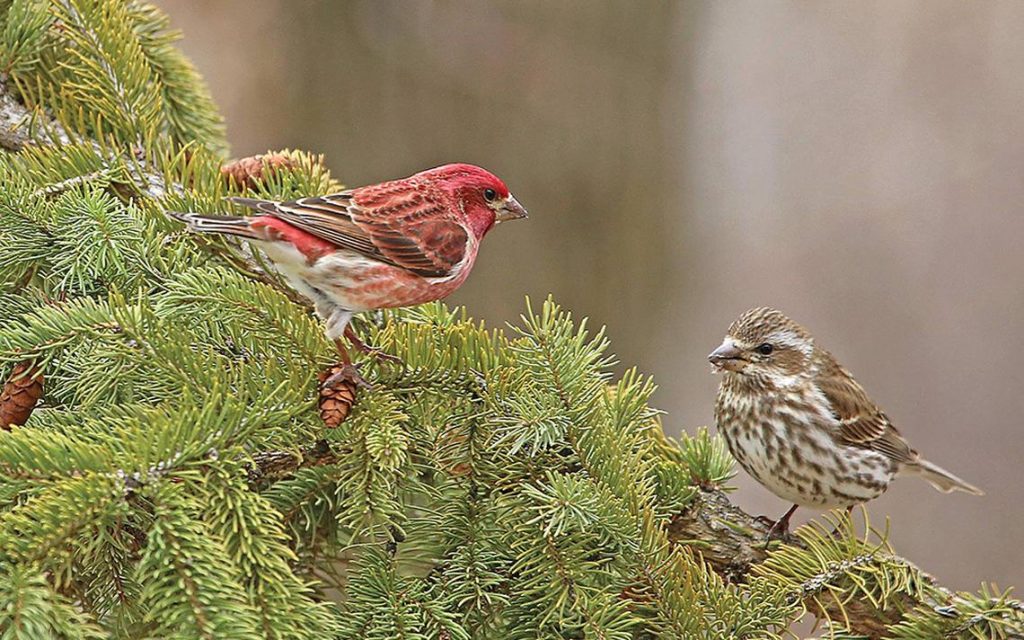by Doug Becker
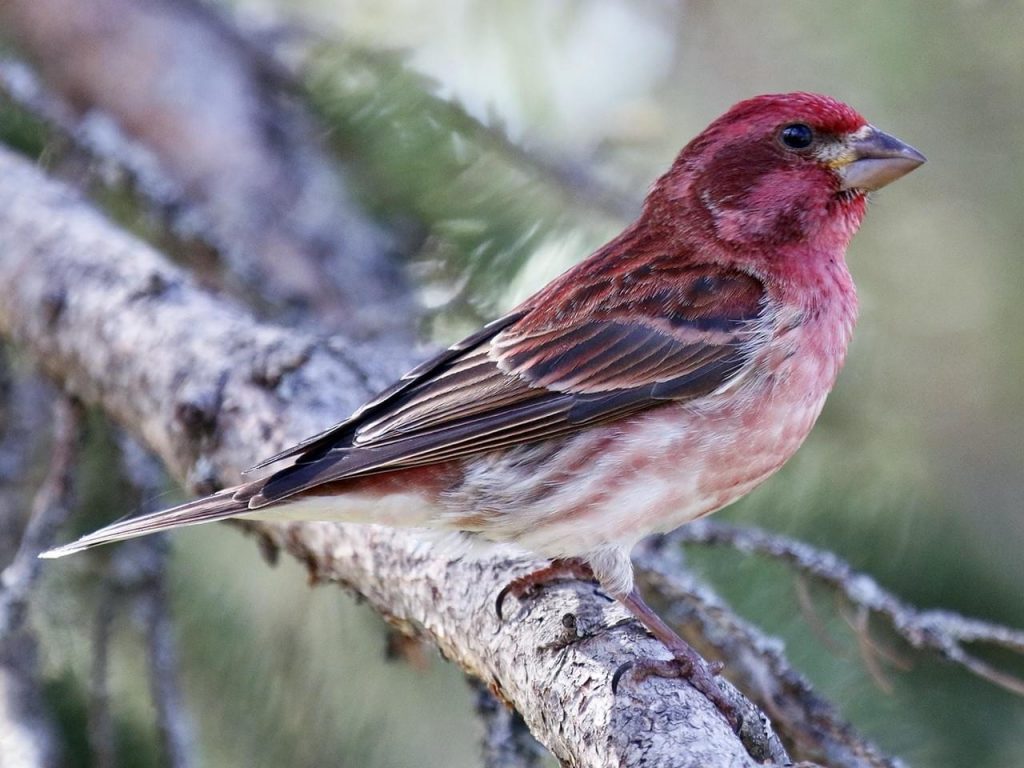
Roger Tory Peterson best described the Purple Finch as a “sparrow dipped in raspberry juice.” He couldn’t have been more descriptive. The male Purple Finch is, indeed, a bright, raspberry red with dark brown striping down his back and wings. The female is more subdued in brown with a striped breast and long eyebrow. These birds are small, but as seed eaters, they have a large bill. You can find Purple Finches in forests by listening for their warbling song from high in the trees. More likely, however, scanning your field glasses around your own backyard feeder may provide the best place for sightings.
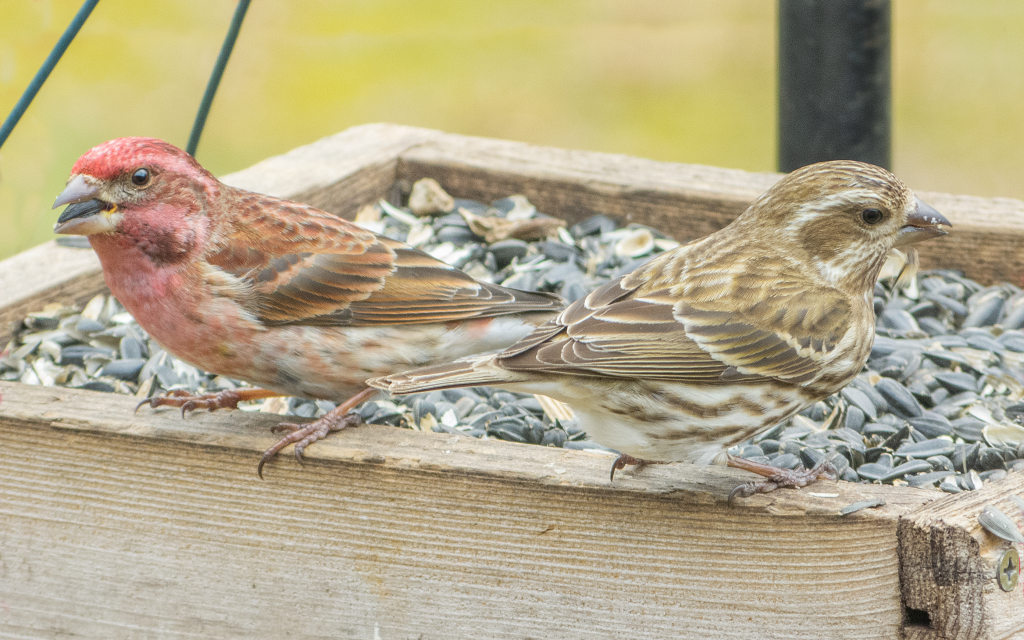
The Purple Finch’s range covers all of southern Canada, the eastern United States to the Rocky Mountains, then down the western coast. This beautiful Finch moves around erratically from year to year, so it’s always a pleasant surprise to find them at your sunflower seed feeder. This was my experience when living in Wisconsin. Along with the Cardinals, the Purple Finches were the most outstanding against the bright-white snow. Interestingly, their bright-red color can vary in intensity, even showing some yellow at times. This has everything to do with diet. Birds’ red and yellow colors come only through the pigment of what they eat. Like many bird species, the females go for the most colorful guys first.
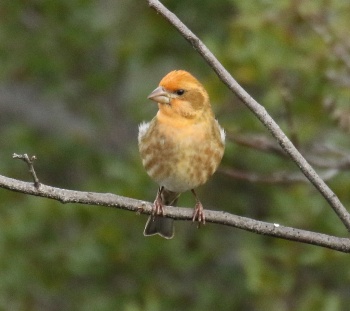
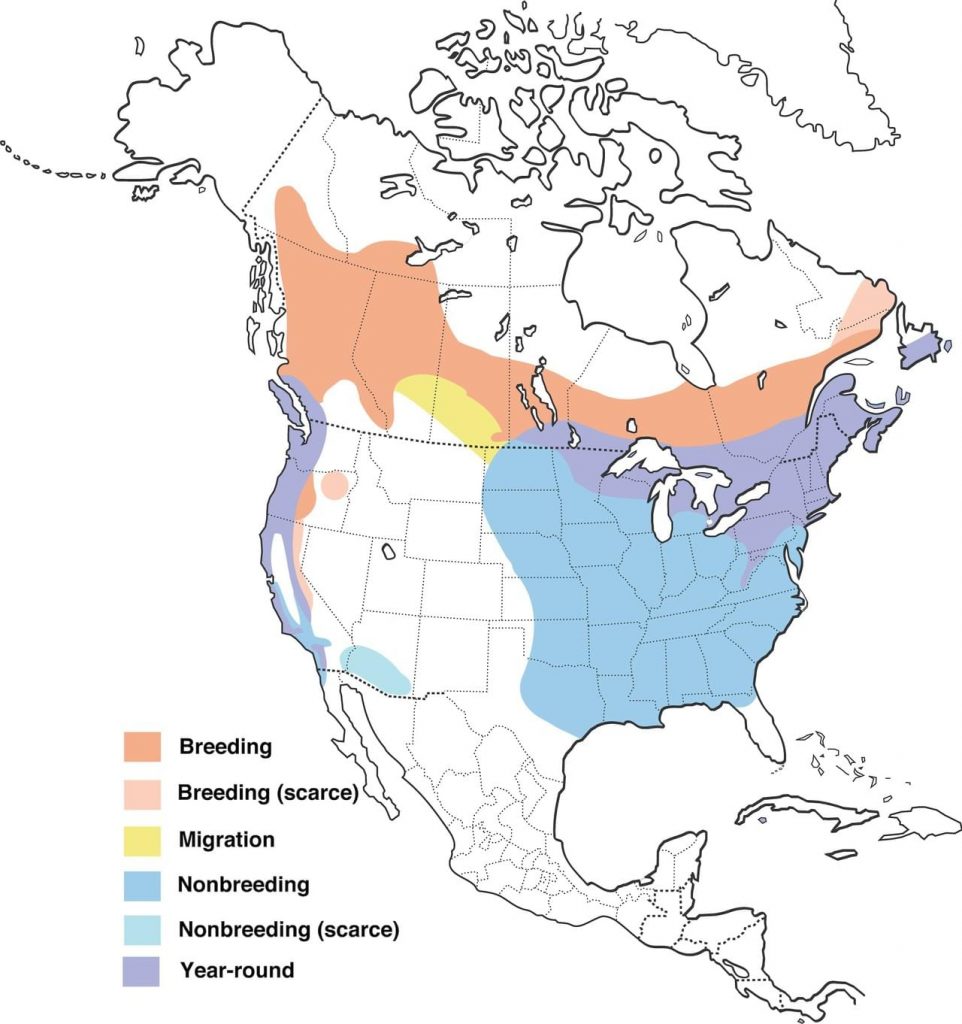
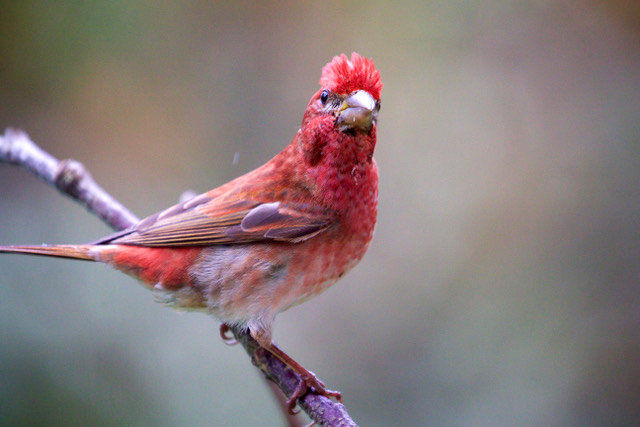
Don’t be confused! Not all that looks red is a Purple Finch! There’s the many House Finches with some pink and a patch of red. The Cassin’s Finch in the western U.S. shows a splash of red on his head, and don’t forget about the cute little Redpoll with his bright-red cap. An anxious birder who makes fast identifications could definitely get these birds confused. Your good quality binoculars, and handy Peterson or Sibley’s birding field guide, OR download the Merlin app, and you can quickly compare. It’s easy! The Purple Finch clearly stands out in the crowd. More red, big black beak, more sleek, and much more beautiful.
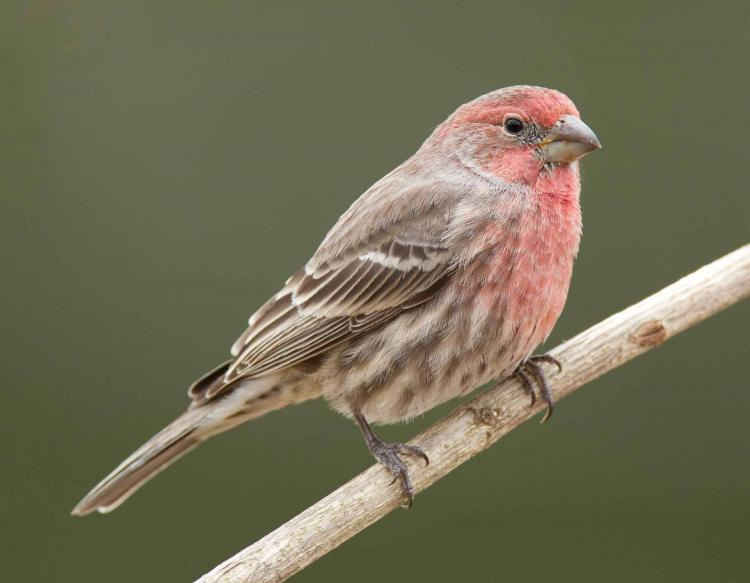

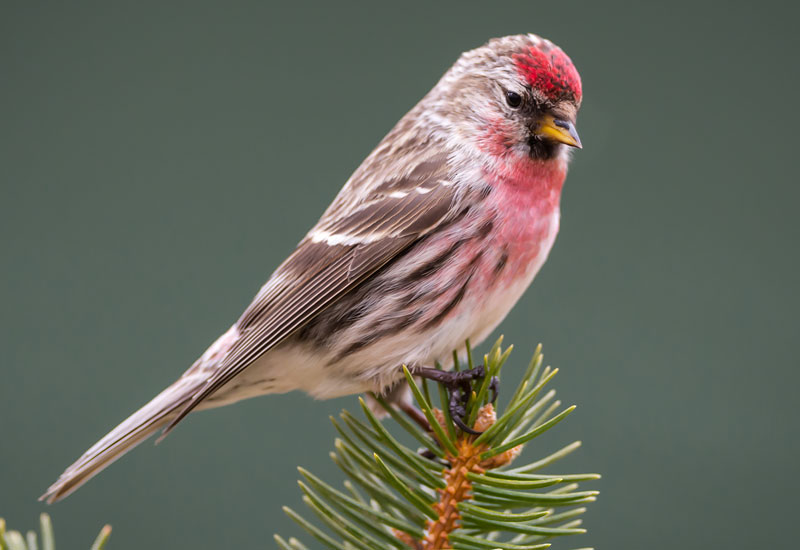
Purple Finches like to nest at the far end of long branches. Occasionally, they’ll build their nest in heavy shrubs or vine tangles. The nest is made in 3-8 days, and it’s the female who does most of the construction. The base is a collection of sticks, twigs, and roots while the cup is lined with grass and animal hair for soft bedding for her brood. The finished nest is about 7 inches wide, and 4 inches tall. Clutch numbers are 2-7, and she will brood 1-2 times each year.
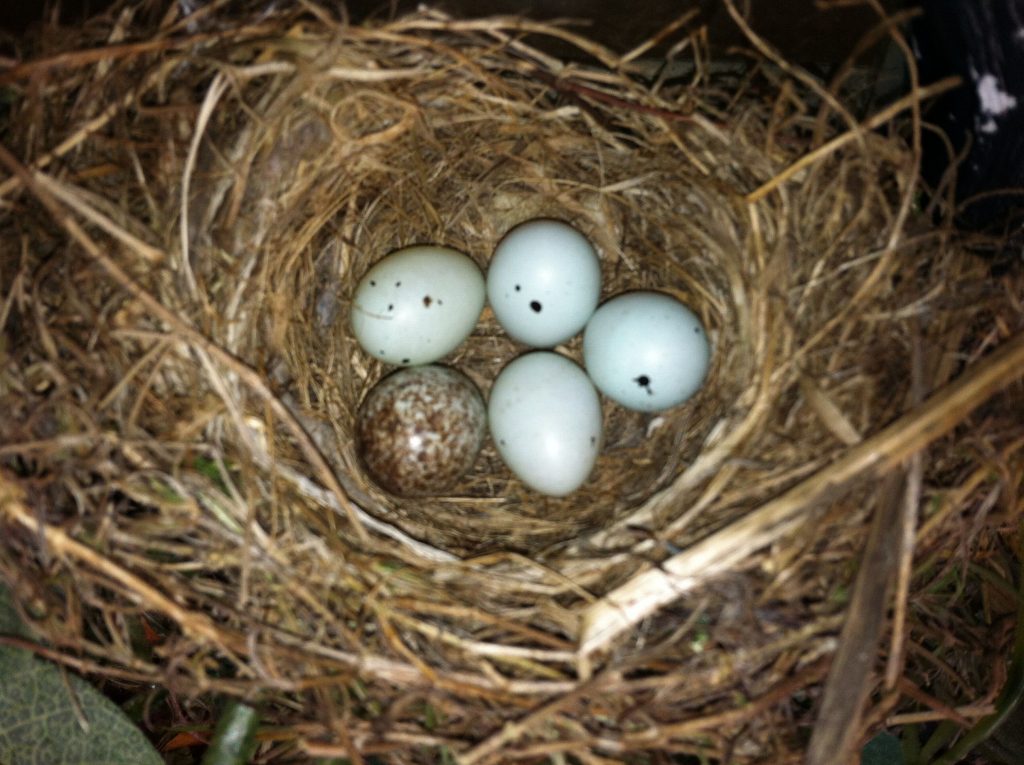
Unlike the ever-growing population of House Finches, the numbers of Purple Finches are in decline. The North American Breeding Bird Survey has shown a 1.5% per year decline from 1966 to 2014 resulting in a cumulative decline of 52%. This rates the Purple Finch at a 9 out of 20 on the Continental Concern Score. The main reason for the decline has to do with the huge increase of House Finches that have come from the west and taken over some of the Purple Finch’s eastern breeding range. The best that we birders can do is to participate in bird counts, and keep our feeders filled with the right and best quality feed. While they enjoy black oil sunflower seeds and Nyjer thistle, they really love safflower seeds!

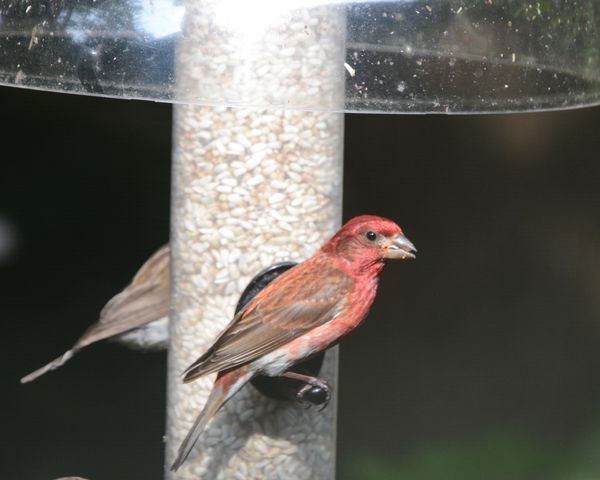
Ah, Purple Finch! I’ll always be looking for one of my favorite winter birds, the Purple Finch. See ya out there!
